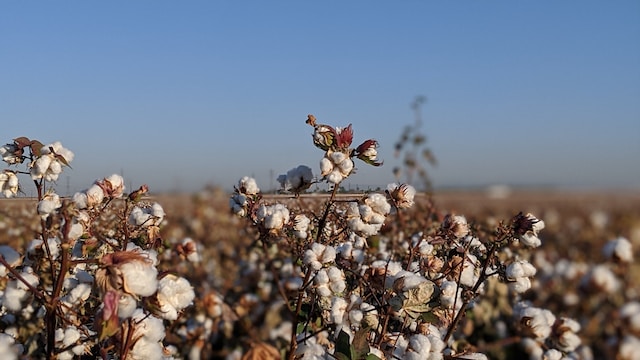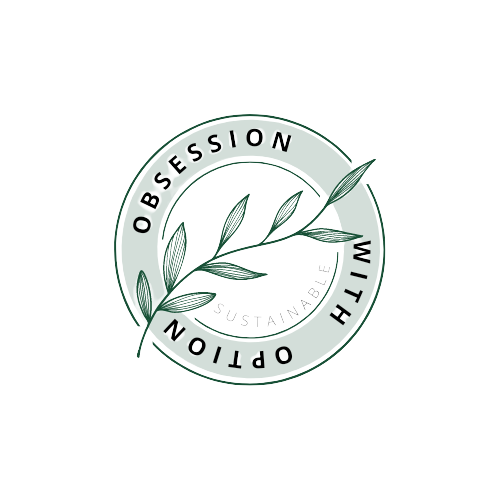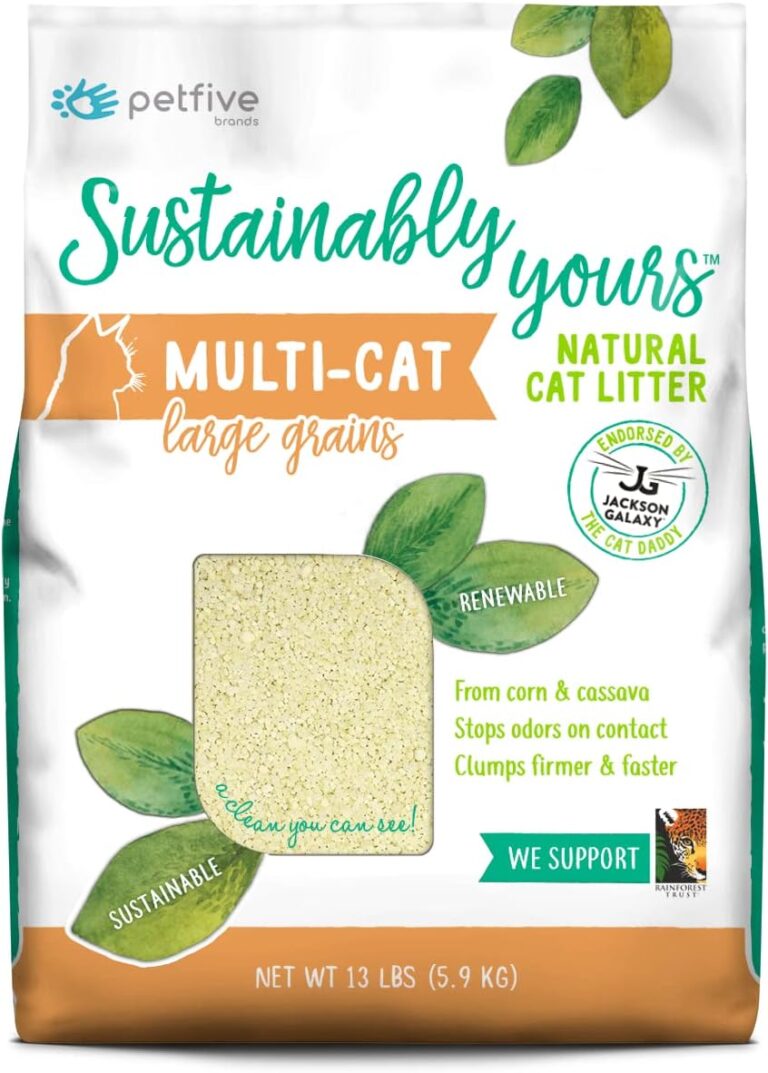You are about to embark on a journey of unraveling the true sustainability impact of cotton. In this article, we will explore the intricate relationship between cotton production and its environmental, social, and economic implications. Prepare to gain valuable insights into the sustainability challenges surrounding the cotton industry and discover the potential solutions that can lead us towards a more sustainable future. Let’s dive into the captivating world of cotton and uncover its sustainability impact together.
Unraveling Cotton’s Sustainability Impact
Cotton, one of the most widely used natural fibers globally, plays a significant role in our lives. However, it is important to understand the environmental, social, and economic impacts associated with its production. In this article, we will delve into various aspects of cotton’s sustainability impact and explore initiatives, innovations, and collaborations aimed at addressing these challenges.

Water Usage
Cotton farming is famously known for its high water demands. According to the World Wildlife Fund (WWF), it takes approximately 2,700 liters of water to produce a single cotton t-shirt. This water-intensive crop can put a strain on local water resources, especially in regions already experiencing water scarcity. However, sustainable irrigation practices and technological advancements, such as precision agriculture and smart irrigation systems, can help reduce water consumption and mitigate the environmental repercussions.
Pesticide and Fertilizer Applications
The widespread use of pesticides and fertilizers in conventional cotton farming poses risks to human health, biodiversity, and ecosystems. These chemicals can contaminate water sources and have adverse effects on wildlife and nearby communities. Transitioning to organic cotton production, which prohibits the use of synthetic pesticides and genetically modified organisms, can help minimize pesticide-related environmental impacts and ensure a safer work environment for farmers.
Soil Degradation
Intensive cotton farming practices can lead to soil degradation, including nutrient depletion and erosion. Without proper soil management techniques, such as crop rotation and cover cropping, the long-term productivity and fertility of agricultural land can be compromised. Sustainable cotton farming practices prioritize soil health and aim to build resilient and nutrient-rich soils through organic matter additions and reduced tillage.
Biodiversity Loss
Cotton production can contribute to the loss of biodiversity due to the conversion of natural habitats for cultivation and the use of pesticides harmful to beneficial insects and wildlife. Protecting biodiversity is crucial for maintaining ecosystem stability and resilience. Sustainable cotton initiatives emphasize the conservation of natural habitats and the use of integrated pest management strategies to minimize biodiversity loss.
Human Rights Issues in Cotton Production
Unfortunately, cotton production is plagued by human rights issues, particularly in developing countries. Exploitative labor practices, including child labor and forced labor, are prevalent in some cotton-growing regions. Such practices not only infringe upon human rights but also hinder the progress of sustainable development. It is crucial for governments, industry stakeholders, and consumers to address these issues collectively and support initiatives promoting fair and ethical working conditions.
Child Labor and Forced Labor
Child labor and forced labor remain significant challenges in certain cotton-producing countries, where poverty and limited opportunities perpetuate vulnerable labor conditions. Efforts to combat child labor and forced labor include promoting education, empowering local communities, and implementing supply chain traceability measures to ensure responsible sourcing practices. Responsible brands play a pivotal role in driving change and supporting projects that protect the rights and welfare of workers.
Working Conditions in Cotton Farms
Working conditions in cotton farms can be harsh and unsafe, particularly in regions lacking adequate labor regulations or enforcement. Workers may face long hours, exposure to harmful pesticides, and inadequate access to healthcare. By supporting fair trade practices, implementing social compliance standards, and providing training on occupational health and safety, the cotton industry can create a safer and more dignified working environment for all involved.
Impact on Small-scale Farmers
Small-scale cotton farmers often face economic challenges and struggle to compete in global markets. Market volatility and price fluctuations expose them to financial risks and uncertainties, making it difficult to break the cycle of poverty. Supporting and empowering small-scale farmers through fair trade initiatives, access to credit, and capacity-building programs can help alleviate poverty and create a more inclusive and sustainable cotton value chain.
Market Volatility and Price Fluctuations
Cotton prices are subject to market volatility influenced by factors such as supply and demand dynamics, weather conditions, and global economic trends. This volatility can have adverse effects on cotton farmers’ livelihoods and the stability of cotton-dependent economies. By promoting diversification, strengthening producer organizations, and advocating for fair pricing mechanisms, the industry can enhance market resilience and protect farmers from market shocks.
Dependency on Global Markets
The cotton industry’s dependency on global markets exposes it to risks associated with trade policies, exchange rate fluctuations, and geopolitical tensions. When international trade is disrupted, it can have cascading effects on the entire supply chain, including farmers, producers, and consumers. Encouraging local consumption and supporting domestic textile industries can help reduce dependency on global markets and foster more sustainable economic growth.
Income Inequality and Poverty
Income inequality is a significant issue within the cotton sector, with small-scale farmers often marginalized and receiving low prices for their produce. This perpetuates a cycle of poverty within cotton-producing communities. By promoting fair trade practices, providing fair prices to farmers, and supporting income diversification strategies, the industry can work towards reducing income inequality and improving the livelihoods of cotton farmers and their communities.
Subsidies and Trade Policies
Subsidies and trade policies can significantly impact cotton production and trade dynamics. Subsidies provided by some governments lead to market distortions, overproduction, and price suppression, affecting the competitiveness of farmers in other regions. Revising and reforming trade policies to promote fair trade practices, eliminate harmful subsidies, and ensure a level playing field for all stakeholders are essential steps towards creating a more sustainable and equitable cotton industry.
Organic Cotton
Organic cotton cultivation follows strict standards that prohibit the use of synthetic pesticides, genetically modified organisms, and chemical fertilizers. It promotes ecological balance, soil health, and biodiversity conservation. Organic cotton certification ensures transparency and traceability along the supply chain, allowing consumers to make informed choices about sustainable clothing options.
Fair Trade Cotton
Fair trade cotton certification aims to address social and economic injustices in the cotton industry by guaranteeing fair prices, safe working conditions, and community development for farmers and workers. Fair trade organizations work closely with farming communities to promote sustainable farming practices, empower marginalized groups, and create opportunities for education and healthcare.
Better Cotton Initiative
The Better Cotton Initiative (BCI) is a global sustainability program that promotes more sustainable cotton farming practices. BCI farmers adhere to specific principles, including minimizing pesticide use, reducing water consumption, and improving working conditions. By supporting the BCI, retailers and brands contribute to the transformation of the cotton industry and the adoption of more sustainable practices.
Global Organic Textile Standard
The Global Organic Textile Standard (GOTS) is a comprehensive certification for textiles made from organic fibers, including cotton. GOTS covers the entire textile supply chain, from farming to processing, ensuring the use of environmentally friendly materials and social responsibility throughout. GOTS certification provides consumers with confidence that the products they purchase meet stringent sustainability criteria.

Genetically Modified Cotton
Genetically modified cotton, commonly known as Bt cotton, has been genetically engineered to resist certain pests. This technology has been widely adopted in some countries due to its potential to increase yields and reduce pesticide use. However, the long-term environmental impacts and concerns regarding biodiversity loss and the emergence of resistant pests require careful monitoring and regulation to ensure sustainable and responsible use.
Precision Agriculture
Precision agriculture utilizes technology and data analysis to optimize farming practices, reduce inputs, and increase resource efficiency. In cotton farming, precision agriculture techniques such as GPS-guided machinery, remote sensing, and variable rate technology can be employed to precisely apply water, fertilizers, and pesticides. This approach minimizes waste, enhances crop productivity, and reduces the environmental footprint of cotton farming.
Smart Irrigation Systems
Smart irrigation systems employ sensors, data analytics, and automation to optimize irrigation practices and prevent water wastage. By continuously monitoring soil moisture levels, weather conditions, and crop water requirements, smart irrigation systems enable farmers to make informed decisions regarding irrigation scheduling and minimize water usage. Implementing these systems in cotton farming can significantly contribute to water conservation and resource efficiency.
Sustainable Cotton Farming Practices
Sustainable cotton farming practices encompass a range of techniques that prioritize environmental stewardship, resource efficiency, and biodiversity conservation. These practices can include organic farming methods, crop rotation, agroforestry, integrated pest management, and soil conservation techniques. By adopting these practices, cotton farmers can minimize their ecological footprint, enhance soil health, and contribute to sustainable agricultural systems.
Recycling and Upcycling of Cotton Waste
Efforts to close the loop in cotton production include recycling and upcycling cotton waste into new products. Cotton waste, such as pre-consumer and post-consumer textiles, can be transformed into yarns, fabrics, and non-woven materials through recycling processes. Upcycling techniques can also breathe new life into cotton waste by transforming them into innovative and stylish products. These circular economy practices help reduce textile waste, conserve resources, and minimize the environmental impact of cotton.
Closed-loop Production Systems
Closed-loop production systems aim to create circular economies by minimizing waste and maximizing resource utilization. In the cotton industry, closed-loop systems involve recycling and reusing textile fibers, adopting sustainable manufacturing processes, and establishing take-back and recycling programs in collaboration with brands, retailers, and consumers. Such systems effectively reduce the reliance on virgin materials, divert textile waste from landfills, and contribute to a more sustainable and resilient cotton industry.
Circular Cotton Initiatives
Circular cotton initiatives promote the implementation of sustainable practices and business models that prioritize circularity and resource efficiency. These initiatives often involve collaborations between different stakeholders, including brands, suppliers, NGOs, and researchers. By adopting circular economy principles and supporting innovations in recycling, upcycling, and textile recovery, these initiatives contribute to the transformation of the cotton industry towards a more sustainable and circular system.
Textile Supply Chain Transparency
Consumer demand for transparency in the textile supply chain has grown significantly in recent years. Consumers want to know where their clothes come from, who made them, and under what conditions. By providing supply chain transparency, brands can build trust and empower consumers to make more sustainable choices. Various technologies, such as blockchain and traceability platforms, enable real-time tracking and verification of product origins, ensuring ethical and sustainable sourcing practices.

Sustainable Fashion Movements
Sustainable fashion movements, characterized by the rise of ethical and eco-conscious consumer preferences, have played a crucial role in driving the demand for sustainable cotton. Influencers, activists, and organizations have raised awareness about the social and environmental impacts of the fashion industry, encouraging consumers to support responsible brands and make mindful choices. These movements have sparked a positive change in consumer behavior and encouraged the industry to adopt more sustainable practices.
Consumer Preferences for Sustainable Cotton
Today’s consumers are increasingly aware of the environmental and social implications of their purchasing decisions. They value products that align with their values and prioritize sustainability. As a result, there is a growing demand for sustainable cotton products, including organic cotton, fair trade cotton, and products carrying recognized sustainability certifications. By understanding and responding to consumer preferences, brands and retailers can unlock new market opportunities and contribute to a more sustainable future.
Demand for Responsible Brands
Consumers are demanding greater accountability and responsibility from brands, encouraging them to take concrete actions towards sustainability. Brands that embrace sustainability as a core value, implement transparent supply chains, and prioritize environmental and social impact reduction are gaining a competitive edge. Consumer demand can be a powerful driver for positive change, incentivizing brands to adopt sustainable practices, support sustainable initiatives, and contribute to a more sustainable cotton industry.
National and International Regulations
Governments play a crucial role in establishing and enforcing regulations that promote sustainable practices in the cotton industry. National and international regulations can address issues such as labor rights, water usage, pesticide use, and waste management. By setting standards and incentivizing sustainable practices, governments can create a conducive environment for the adoption of sustainable cotton farming and production methods.
Sustainable Development Goals
The United Nations’ Sustainable Development Goals (SDGs) provide a framework for addressing global challenges, including those related to cotton production. Several SDGs, such as zero hunger, decent work and economic growth, climate action, and responsible consumption and production, intersect with the cotton industry’s sustainability agenda. By aligning efforts and partnerships with the SDGs, stakeholders can work towards achieving a more sustainable and inclusive cotton sector.
Investments in Research and Development
Investments in research and development (R&D) are crucial for driving innovation, improving sustainability practices, and finding solutions to the challenges faced by the cotton industry. R&D efforts can focus on developing drought-resistant cotton varieties, improving fiber quality, enhancing crop management techniques, and creating sustainable alternatives to conventional cotton production methods. By supporting R&D initiatives, stakeholders can contribute to the continuous improvement and long-term sustainability of the cotton sector.
Promotion of Sustainable Cotton
Governments, industry associations, and nonprofit organizations actively promote sustainable cotton through awareness campaigns, capacity-building programs, and market incentives. Increased promotion of sustainable cotton creates awareness among consumers, educates industry stakeholders, and fosters a supportive environment for the adoption of sustainable practices. By promoting sustainable cotton, stakeholders can collectively work towards a more sustainable and responsible cotton industry.
Multi-stakeholder Initiatives
Multi-stakeholder initiatives bring together various actors, including producers, governments, NGOs, retailers, and consumers, to collaboratively address sustainability challenges in the cotton industry. These initiatives provide a platform for dialogue, knowledge sharing, and collective action. By working together, stakeholders can leverage their expertise and resources to drive systemic change, create innovative solutions, and pave the way for a more sustainable cotton sector.
Industry-Led Partnerships
Industry-led partnerships are instrumental in driving sustainability initiatives throughout the cotton value chain. Collaborative efforts between brands, suppliers, and producers can lead to the development of common sustainability standards, transparent supply chains, and shared best practices. These partnerships foster a collective sense of responsibility, encourage knowledge exchange, and accelerate the adoption of sustainable cotton production and sourcing practices.
Public-Private Cooperation
Public-private cooperation is crucial for creating an enabling environment that supports sustainability in the cotton industry. Governments, industry associations, and private sector entities can collaborate through policy development, funding opportunities, and capacity-building programs. By aligning efforts and sharing resources, public-private cooperation can drive sustainable innovation, establish regulatory frameworks, and promote economic growth while addressing sustainability challenges.
Knowledge Sharing and Capacity Building
Knowledge sharing and capacity building initiatives play a vital role in creating awareness, disseminating best practices, and empowering stakeholders in the cotton industry. Training programs, workshops, and farmer field schools can help small-scale farmers adopt sustainable farming practices, improve productivity, and enhance their livelihoods. Knowledge sharing platforms also facilitate dialogue, collaboration, and the exchange of ideas, thereby fostering continuous learning and improvement within the cotton sector.
Balancing Production and Demand
Balancing production and demand is a significant challenge in the cotton industry. Predicting market trends, managing inventory, and avoiding overproduction or underproduction require careful planning and collaboration among different industry stakeholders. By improving data collection, market intelligence, and supply chain transparency, the industry can enhance its ability to respond to fluctuating demand and achieve a more sustainable balance between production and consumption.
Climate Change and Extreme Weather Events
Climate change poses a significant threat to cotton production due to increased frequency and intensity of extreme weather events, such as droughts, floods, and heatwaves. These events can disrupt crop growth, reduce yields, and exacerbate water scarcity. Adapting to climate change requires the implementation of resilient farming practices, improved water management strategies, and the development of climate-resilient cotton varieties. Addressing climate change is a critical aspect of ensuring the long-term sustainability of the cotton industry.
Scaling Up Sustainable Practices
Scaling up sustainable practices is essential for creating a significant impact on the cotton industry’s sustainability. While there are several successful initiatives and pilot programs, widespread adoption of sustainable practices remains a challenge. Scaling up requires investments in infrastructure, access to finance, knowledge dissemination, and supportive policy frameworks. By prioritizing scalable solutions and collective action, the industry can accelerate the adoption of sustainability practices and drive meaningful change.
Consumer Education and Engagement
Consumer education and engagement are vital factors in creating a more sustainable cotton industry. Educating consumers about the social and environmental impacts of their clothing choices and highlighting sustainable alternatives can lead to behavior change and increased demand for responsible products. Brands, retailers, and organizations can play a crucial role in promoting consumer education through transparency, informative labeling, and awareness campaigns that empower consumers to make informed, sustainable choices.
In conclusion, cotton’s sustainability impact is multifaceted and requires collective efforts from all stakeholders involved in the cotton value chain. By addressing environmental, social, and economic challenges through sustainable initiatives, innovation, partnerships, and policy interventions, the cotton industry can strive towards a more sustainable and responsible future. The journey towards sustainability is an ongoing process, and continuous improvement, collaboration, and consumer awareness will drive the cotton industry’s transformation towards a more sustainable and inclusive model.











